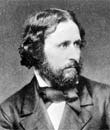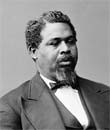
Day-by-Day Timeline of Events
February 4, 1861
In an effort to settle the issue of slavery, representatives of some twenty-one states meet in Washington, D.C. to form the Washington Peace Conference. The conference runs until February 27th.
March 21, 1861
In a speech given during a stop in Savannah, Georgia, Confederate Vice President Alexander H. Stephens reaffirms the southern stance on slavery.
April 16, 1861
With the stroke of a pen, President Lincoln abolishes the practice of slavery in Washington, D.C.
July 22, 1861
The United States Congress pushes through a resolution that declares the raging war to be about the preservation of the Union and not the ending of slavery.
August 6, 1861
The Second Confiscation Act is passed by the United States Congress. Details include forfeiting of slaves should one be caught aiding the Confederate war effort.
August 30, 1861

September 2, 1861
The emancipation of Missouri slaves by Union General John C. Fremont is put down by President Lincoln. He is then reassigned.
September 13, 1861
President Lincoln turns down a request by Chicago-area group to issue an emancipation proclamation. The president is convinced the action would sway border states to the Confederate cause.
February 13, 1862
West Virginia authorities pass a law that restricts slaves and people of color from being given permanent residency.
March 6, 1862
To assuage Union border states, President Lincoln pushes for compensation to slave owners who end up losing their slaves.
May 13, 1862

July 17, 1862
The Second Confiscation Act is passed by the United States Congress. The act frees those slaves owned by southern supporters.
September 22, 1862
President Lincoln's Emancipation Proclamation is set to take effect on January 1st, 1863. The proclamation covers only those slaves in Confederate-governed states but excludes those border states supporting the Union.
September 27, 1862
The First Regiment Louisiana Native Guards is formed. It marks the first Union Army regiment made up entirely of free blacks.
October 11, 1862
The Confederate Conscription Act is amended to exclude those managing twenty or more slaves.
October 28, 1862
The 79th U.S. Colored Infantry Regiment from Kansas is the first black regiment to see combat for Union forces. It is involved in clashes at Island Mounds, Missouri.
December 23, 1862
To dissuade further involvement of free blacks in Union ranks, the government of the South decrees that any captured freed slaves fighting under the Union banner face prosecution under local laws. This includes both punishment and execution for fighting the South.
January 1, 1863
Lincoln's Emancipation Proclamation goes into effect. The proclamation does not cover those slaves residing in states within the Union itself.
May 14, 1863
The Women's Loyal National League is formed, organized by Elizabeth Stanton. Its president is Susan B. Anthony. It is recognized as the first national women's political organization and seeks an amendment for the U.S. Constitution that officially abolishes slavery.
June 2, 1863
Former slave Harriet Tubman guides Union forces to raid Confederate plantations in the South Carolina Lowcountry. About 750 slaves are freed in the operation and these men strengthen Union numbers by joining their ranks. The raid is recognized as the Raid at Combahee Ferry.
December 4, 1863
Robert E. Lee's former estate at Arlington, Virginia, is dedicated as Freedman's Village to serve as home to some 1,100 former slaves.
December 8, 1863
In an address to Congress, President Lincoln reveals that around 100,000 former slaves have joined the Union ranks in the fight against the South.
January 2, 1864
Confederate General Patrick Cleburne suggests that some slaves be made free to help fight in the Southern Cause.
February 7, 1864
Jacksonville, Florida is the target of a Union force led by General Truman Seymour. Half of the attacking force is made up of black soldiers. The city is taken.
April 8, 1864
A move towards abolishing slavery in the United States is made when the 13th Amendment is passed by the U.S. Senate. The measure passes by a vote of 38 to 6.
April 12, 1864
Fort Pillow, Tennessee, is the site of a Confederate victory by General Nathan Bedford. Black soldiers fighting for the Union are executed.
June 15, 1864
The 13th Amendment of the Constitution, intended to abolish slavery, is defeated in the House of Representatives by a vote of 95 to 66.
June 28, 1864
The Fugitive Slave Act of 1850 is repealed. The measure is officially signed by President Lincoln. The law called for recaptured runaway slaves in Northern territories to be returned to their masters in the South.
December 6, 1864
Salmon Chase, the former Secretary of the Treasury, is appointed to the Supreme Court by President Lincoln.
January 11, 1865
Missouri, a Union state, adopts a resolution abolishing the practice of slavery within its borders.
January 11, 1865
General Robert E. Lee, realizing the fortunes of the Confederacy are growing limited, announces his support for a gradual freedom for slaves.
February 18, 1865
Castle Pinckney in Charleston Harbor (South Carolina) falls to the South Carolina 21st Colored Infantry of the Union army.
February 23, 1865
The Confederate Senate rejects a proposal that would see as many as 200,000 blacks infused into the Confederate ranks.
March 3, 1865
The Freedmen's Bureau is established by the United States government to aid newly-freed slaves. The organizations formal name is 'Bureau of Refugees, Freedmen, and Abandoned Lands' as is part of the Reconstruction initiative the Union plans for the South following the end of the war.
March 13, 1865
Confederate President Jefferson Davis approves a bill that will allow slaves to 'earn' their freedom through enlistment in the Confederate ranks.

